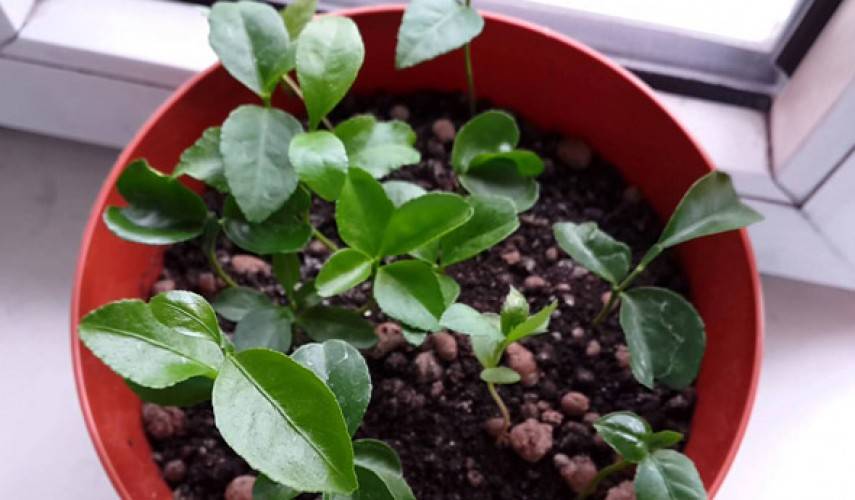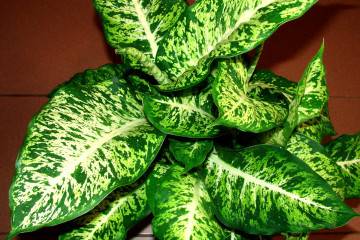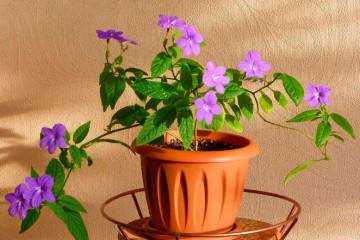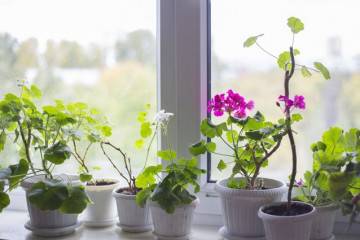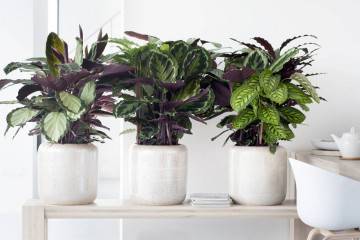Citrus indoor plants - home care
Content:
Citrus fruits are conquering more and more hearts of flower growers. It is fashionable, beautiful and useful. After all, the secreted essential oils and disinfectants endow plant owners with good health and resistance to acute respiratory infections.
Not all citrus fruits can be grown in apartments in Russia. But even those that grow, linger in them for a short time. Many refer to the capriciousness and exactingness of plants. To grow a citrus representative at home, you need to know how to properly care for this exotic.
Types of citrus fruits for the home
At home, you can grow trees from the usual fruits - lemon, orange, tangerine, lime, grapefruit, pamelo. From unusual exotic plants, you can find kumquat, calamondin, citron in flower shops.
Citrus diseases
Glossy beauties are prone to many diseases if the conditions for their growth do not meet the required ones. The most common diseases:
- Fungal diseases. Fungi affect the leaves, becoming covered with spots. Twigs and buds turn black and dry out. Powdery mildew forms a plaque. Prevention protects the plant from potential problems. When treating, it is important to remove damaged areas.
- A sooty fungus can be found as a black coating that can be easily removed with a damp cloth. If the disease is detected at the initial stage, the remedy to combat it is a soap solution.
- Viral diseases are expressed most often by a change in greenery to a marbled color. Such a plant cannot be saved.
Any disturbances in care, a sharp change in conditions, temperature or humidity leads to a change in the appearance of the tree. Its leaves begin to dry, fall off, turn yellow, become stained.
Indoor citrus care
Three whales on which proper care is worth - light, water and heat. If one link out of three falls out, the plant will die sooner or later.
Lighting for citrus comes first. The duration of daylight hours is 12 hours or less. Moreover, both in summer and in winter. The light should be bright and cover the plant from all sides, therefore, artificial light is required in winter.
Citrus watering mode
Watering is the next equally important aspect of the comfortable existence of a plant. In the summer, a medium-sized plant needs watering twice a day. The plant absorbs moisture very quickly both from the soil and from the air. Watering should be sufficient, the excess flowing into the pan is removed immediately after watering.
In winter, watering is required as the topsoil dries out, depending on the temperature of the content. On average, it is twice a week.
Temperature and humidity
The norm of air humidity is 60-70%, so frequent spraying is needed, wiping the leaves with a damp cloth. On hot days, you can place containers of water next to the pots.Homemade citrus will be grateful if you have a humidifier next to it.
As for the temperature regime, it is very important for the flower that the temperature of the root system in the pot and the green leaf part does not differ. Large tubs are often placed on the floor, where the temperature is 0.5-1 degrees lower. Even because of such a slight difference, the plant may die. Floor pots must be placed on stands. If in the summer the flowers are taken out into the street, the pots must, on the contrary, be covered so that the material does not heat up from the sun's rays and does not overheat the soil.
It is very important to provide the plant with a dormant period in winter by lowering temperatures and reducing watering. At this time, it is important to protect the flower from the dry air of the apartments. It is taken out to the insulated balcony or constructions are made that protect the windowsills from the batteries.
Fertilizing citrus fruits
Feeding should be approached with the utmost care. To feed the plant, it is best to use special complexes for citrus crops.
Fertilizers should be applied strictly during the period of active growth. At the beginning of the exit from the dormant period or in preparation for it, the concentration of fertilizers is reduced by 50%.
Pitted orange at home
Even a novice florist can plant an orange tree. Good seed germination and resistance to mistakes in care are the main qualities of the plant.
Conditions for sprouting orange seeds
The optimal time for sowing an orange is late winter or early spring. By the time the sprouts appear, daylight hours will increase and will contribute to rapid growth. To germinate a bone, you need to take into account the following main points:
- The room temperature should be at least +18 degrees.
- It is important to protect the pot from drafts, cold glass on the windowsill.
- After the first leaves appear, the sprout needs a lot of diffused light.
- When germinating, it is important to maintain an optimal moisture level - at least 40%.
Stages of sprouting an orange seed
The first stage is washing the seeds and soaking them in water for a day with the addition of any root growth stimulants. At the second stage, the seeds are sown in separate pots or in a common box. The distance between the seeds should be at least 5 cm.
Small seedlings should be protected from drafts, cold, temperature extremes. After the sprouts appear, the orange needs a lot of light. An important growth factor should be remembered - the same temperature both in the pot and around it.
For the first planting, you need a mixture of peat and sand in equal quantities. With the onset of active growth, a mixture is required for adult citrus plants.
A pot for one seed is suitable for no more than 100 ml. It must have a drainage layer and at least 3 holes in the bottom. With each subsequent transfer of an orange, you should take a pot 3 cm larger in diameter.
The underdeveloped root system of a seed sprout is not able to actively absorb water, therefore, overflows will lead to rotting of the sprout. The seed will die from a lack of moisture. Need regular watering in small amounts.
How to choose the fruit of the right ripeness and separate the seed
Ripe orange fruit should be of the correct shape, large, without visible damage, dark spots. Another characteristic of the ripeness of the fruit is its aroma. The more pronounced the orange scent of the fruit rind, the more likely it is ripe. It is better to separate the bone with your hands, then rinse well under running cold water.
Citrofortunella calamondin: home care
Citrus calamondin was developed by breeders exclusively for indoor cultivation. The tree bears fruit for a long time with small edible fruits. It is resistant to the low humidity of Russian apartments, and in summer it grows well in the open air.
Calamondin - what is this fruit
It can also be called golden orange or indoor tangerine. Both names are fully consistent with this wonderful tree. A hybrid of mandarin and kumquat is citrofortunella, home care begins with adaptation.
Adaptation to home conditions
Calamondin is bred for sale in nurseries and greenhouses, where special conditions are created for it. Often, after acquisition, a citrus hybrid dies, as it cannot cope with a sharp change in conditions. Therefore, after purchasing a tree, it is important to preserve its root system and the base of the crown. It is better to remove all fruits from it and branches that are too long. If the tree begins to shed its leaves, this is a sign of a lack of air humidity. You should put a bag on the plant and tie it at the base of the trunk.
The tree loves bright light. In order for it to evenly receive portions of solar energy, the pot should be turned every day (no more than 0.5 cm).
Calamondin is recommended to be kept at + 18-20 degrees in summer and + 12-15 in winter. The watering regime is normal for citrus trees. For feeding, use a special citrus complex. Calamondin requires feeding all year round, as it blooms and bears fruit continuously.
How to care for a lemon tree at home
Lemon purchased or grown at home needs care and attention.
Adaptation to home conditions
Adapting a purchased tree is, first of all, preserving the basis of the plant - the roots and trunk. Excess greens, fruits and flowers should be removed. The lemon should be placed on the southeast window and made permanent for it.
12 hour daylight hours for lemon is the norm. In winter, illumination with artificial light sources is required. In the spring, after waking up, the lemon will grow well at a temperature of + 14-18 degrees. In summer, it is able to withstand +27, in winter, the optimal indicators for it are + 12-14 degrees.
Watering should be set so that the soil in the pot is always moist without stagnant water. To create the right conditions for the plant, it is necessary to take into account the volume of the pot, the size and variety of the tree, the room temperature and the level of humidity.
It is best to plant lemon in a mixture consisting of 2 parts of turf, 1 part of sand, peat, humus. You can dilute it with wood ash and vermiculite.
Mandarin: growing and care at home
Mandarin is popular for indoor breeding. Its drooping twigs with glossy dark leaves and bright fruits are a real decoration of the house.
When growing tangerines, you should maintain an optimal moisture level for citrus fruits - at least 60%. For this, the plant is covered with a film, airing daily. All fruits are removed from the tree, branches are too long. The soil for it should consist of 2 parts of deciduous soil, 1 part of sand and 1 part of humus.
It should be placed in the brightest part of the apartment. It can be a south or southeast window. The temperature should not drop to +15 degrees. In summer, tangerine can bloom and bear fruit even at a temperature of +40. The optimum temperature for the emergence of buds and fruits is + 16-18.
You need to water the plant with settled and warm water (+ 30-35 degrees) after slightly drying out the top layer of the soil.Stagnation of water in the soil or drying out of the earthen coma mandarin does not tolerate.
In the spring and summer, the tangerine needs feeding once every two weeks. It is not necessary to fertilize it in winter.
Grapefruit - a tree at home
The grapefruit tree is sensitive and capricious, with minor changes or gaps in care, but it drops leaves, fruits or dies altogether.
The purchased grapefruit seedling should be protected from sources of cold and dry air. The conditions of detention should be brought closer to the required - heat, humidity and lighting. Grapefruit substrate is a mixture of turf soil with sand and humus in a 2: 1: 1 ratio.
If the daylight hours for a grapefruit is less than 12 hours, it will not live long. In summer, young leaves should be protected from direct sunlight.
In summer, the content temperature for grapefruit is +25 degrees, in the winter period of rest - + 5-6 with good lighting. With the beginning of spring, the temperature should be gradually increased.
In winter, the plant must be watered at least 2 times a week. On hot summer days, watering can even be done every day. Fertilize grapefruit with mineral complexes containing iron, since without this element the plant grows poorly.
Citrus indoor plants are usually grown by experienced growers. With the right care, the incredible aroma and juicy fruits serve as gratitude for their care and attention.

